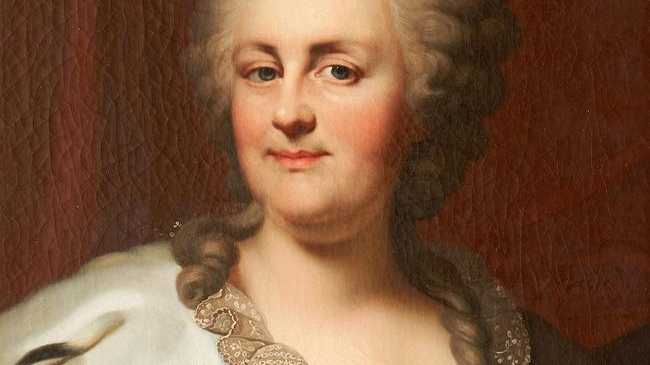Perri Cutten: A Timeless Legacy in Fashion
Remembering Perri Cutten: A trailblazing Australian fashion designer whose timeless elegance and...

 Search...
Search...

Female monarchs there have been. But a 33-year-old woman of intellect who led a military regiment into the country's capital and proclaimed herself the sole empress of the largest empire on earth? No, for this job there was only one woman.
That woman was Catherine the Great, The Empress of Russia who ruled from 1762 to 1796, who extended Russia's borders by thousands of kilometres, whose dedication to arts and science saw the growth of Russian culture rival the legendary Court of Versailles. In terms of lovers, she was both lucky and unlucky, but she was renowned as an impressive lover who entertained younger men until her death at 67.
From not so humble beginnings, the then Princess Sophia was born on May 2, 1729 to aristocratic parents of little financial means. She held the right connections, but her fiscal situation meant she had to marry wisely. At 15-years-old, Princess Sophia was noticed by Empress Elisabeth of Russia. The Empress, who had no children of her own, named her nephew the Grand Duke Peter as heir to the Russian throne and the German Princess Sophia as his bride. The Empress Elisabeth presided over a 20-year period of stability, so she knew what it took to successfully govern a land. It is said she chose the young princess for her intelligence, strong character, ambition and lively wit, a natural balance to her nephew the Grand Duke Peter with his penchant for alcohol, innate neurosis and weak personality.
When the Princess married, she became the Grand Duchess Catherine Aleksevevna and began life at the Royal Court. Here she found herself in a bitterly competitive environment, one full of jealousies and envy. She could have drowned there, lost her personality, had her ambition crushed, instead she watched every regal step, examined relationships and political manoeuvres and came to understand how she would arrange the royal landscape to suit her very own style of leadership. In all, it was during this time she built the foundations that would see her overcome adversaries and lay claim to a golden age of Russian development and dominance.
Her leadership was bold and bright and very much based on reality. As a social reformer, she set out to emancipate the serfs, however on realising this move would lose the favour of landowners, she changed tactics. Records reveal she was so determined not to lose the love of a whole echelon of landowners that there was hardly a free serf left in Russia.
Catherine's sharp and inquiring intellect resonated with the times. As a child of the Age of Enlightment, she inhaled the new ideas of arts and sciences. She built the Smolny Institute for Noble Maidens, the first state-financed higher education institution for women in Europe and founded Russia's first College of Medicine in 1763.
Catherine embraced the new technology of vaccination. To prove its safety, she allowed Dr. Thomas Dimsdale to inoculate her with the smallpox vaccine in 1764. Catherine did not succumb to the dreadful disease and because of her, innumerable lives were saved. One of her first jobs as the Empress was to replenish the state treasury, this she did in 1762 by secularising the property of the clergy, who owned one-third of the land and serfs in Russia. The Russian clergy was reduced to a group of state-paid functionaries, losing the last of their power. The Empress expanded her empire by conquest and diplomacy. By the end of her 34-year reign, around 200,000 square miles had been added to the territory of the Russian Empire.
However, for a good deal of her reign, rather than gaining glory for her social reforms, she became renowned for her sexual life. Her marriage was a disaster from the start and both she and her husband had lovers. Out of her three children only one is said to be the Emperor's child. Throughout her life, Catherine The Great defied conventions and not only had young lovers but continued to have lovers as she entered in older age.
It is said that any criticism of Catherine's rule or foreign policy would use her lack of perceived virtue as a tool to denigrate her abilities. In political cartoons, as she gained more power, the cartoons lampooning her became lewd.
Catherine The Great died in 1792 and her name became forever synonymous with a distinguished epoch in the development of her country.
By Mary Arnold